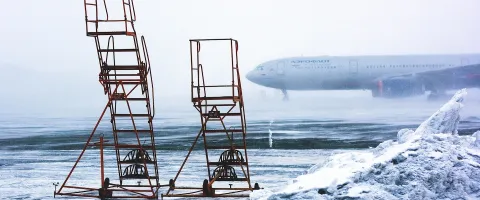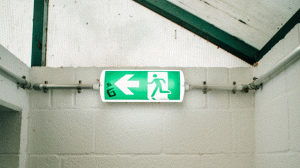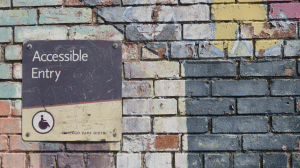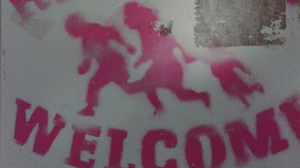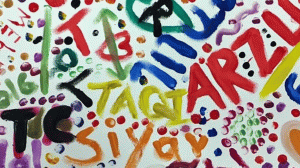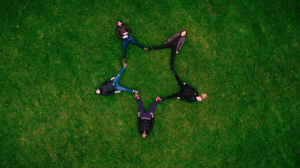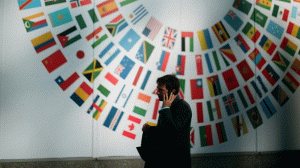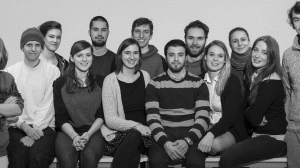“The EU has abandoned and neglected 62,000 asylum seekers in Greece. Sadly, an icy and bitterly cold winter hasn’t.”
- Human Rights Watch Executive Director, Kenneth Roth
As temperatures drop throughout Europe, here’s an overview of what’s happening to refugees in south-eastern Europe and what you can do to help.
Europe
In 2015, the EU promised to accept 63,302 refugees from Greece. To date, only 7,280 have actually been relocated. Yet somehow the European Commission spokeswoman Natasha Bertaud managed to shift the blame and instead openly criticised Greece for how it has handled the situation during these cold months.
In a paper presented at the EU earlier this month, the UN Refugee Agency UNHCR, called for a far-reaching reform of exactly this European asylum system - let’s hope someone was listening.
Germany
Through the EU-Turkey deal and the closure of the Balkan route, Germany managed to reduce the number of refugees arriving in Germany from 610.000 to only 280.000. In the same week, it announced a budget surplus of 6.2 billion Euros for 2016. Amidst all this, the German Interior Minister demanded refugees to be sent back to Greece through the Dublin treaty as soon as March 15th . Despite this, it should be remembered that Germany received and processed more asylum claims in 2016 than the rest of Europe combined.
UK
Out of the 1,900 minors registered at the Calais refugee camp, only 750 were eventually allowed into the UK. Overall, in 2016, Britain received only around 3% of all asylum claims made in the EU. Under section 67 of the Immigration Act, known as the Dubs amendment, the UK vouched to bring vulnerable and unaccompanied children from across Europe to safety. Furthermore, the Dublin regulation allows children with relatives in the UK to be transferred. However, Home Office minister Lady Williams recently confirmed that so far only the 750 children from Calais have been transferred. As a result, the government has been urged, for example by Lib Dem leader Tim Farron, to transfer children from the freezing camps of southern Europe as soon as possible.
France
Following the closure of ‘The Jungle’ in Calais, many refugees were taken to different ‘Welcome Centers’ (CAO) across the country. But many are left stranded on the streets of Paris. Last week, French authorities were criticised by charities such as MSF and Calais Action for confiscating tents and sleeping bags from refugees sleeping on the streets. (Shown in videos by volunteers.) The interior minister has rejected these claims. However, the cues and blankets outside the emergency centre in La Chapelle (Northern Paris) every morning are evidence enough that many migrants, including many minors, have been left on the street despite temperatures this week falling to -6°C. MSF reported that in the last two weeks alone, eight migrants were treated for hypothermia.
Greece
According to the UN, Greece took in 182,500 new migrants in 2016, down 1/3 compared to last year. But it is also experiencing the worst winter in 15 years, and according to UN, 1,100 migrants are living outside in tents on Samos, while Lesbos only has facilities to house around half of the 5,491 refugees on the island. In Samos, flu cases are rife. One Afghan man has been reported dead in Greece, whilst 2 Iraqi men and a Somali woman reportedly died of hypothermia in Bulgaria.
Meanwhile, UNHCR has moved all residents of the Vagiochori Site to hotels, and the authorities in Lesbos said they could move 250 refugees from tents to vacant hotel rooms. A Greek navy ship has also arrived in Lesbos, providing shelter and warmth for 500 refugees and in Athens 10 heated shelters were opened for homeless people. Efforts have been made, but the map below shows that, with many camps at their limit or overfilled, much remains to be done.
Serbia
The situation in Serbia is a bit trickier, and also less transparent. According to Reuters, some 7,500 refugees are stranded. It has agreed with the EU to host up to 6,000 people, but only roughly 3,000 have winter-proof facilities says MSF, as temperatures drop to -20°C. Roughly 2,000 live in empty buildings around the capital city of Belgrade, where the Serbian authorities are restricting the delivery of humanitarian assistance on the streets. In an effort to ensure migrants go to the already over-crowded camps, it is also blocking clothes and food deliveries into the country.
What can you do?
1. Sign the Amnesty appeal: Left out in the cold: refugees freezing on the Greek islands
Ask President of the European Commission Jean-Claude Juncker to urge European governments to keep the agreement they made to accept 60,302 refugees from Greece and provide adequate support to the Greek government in the meantime, to allow them to transfer the refugees from the islands that have been particularly badly hit by the weather.
2. Write in to the immigration inquiry
If you’re in the UK – write in to the Immigration inquiry and let the government know that you believe there IS space for the UK to take in more refugees.
3. Write to your local member of parliament
Let them know you are concerned. It is the one way to really live democracy beyond voting once every couple of years.
For Germany, you can find their contact information here: https://www.bundestag.de/abgeordnete18/
For the UK here: https://www.writetothem.com/
You can use this Facebook post by Calais Action, or this letter to the European Parliament by the Lesvos Legal Centre as a template to formulate your demands.
4. Donate money to large international organisations
They provide the ground-work. They are running most of the big refugee camps in Serbia and Greece and providing structural support around the world. You won’t necessarily be able to target that your money goes to a specific cause, and some are criticised for having high overheads (some more than others), but they are reliable, credible and are doing important work.
Big names include:
Norwegian Refugee Council
Danish Refugee Council
Doctors Without Borders
UNHCR
International Rescue Committee
The Red Cross
OXFAM
5. Donate to smaller organisations and NGOs on the ground
There are tons of organisations out there – set up by volunteers - and looking to fill the gaps that cannot be covered by the big organisations. They support the refugees sleeping in public, and are largely responsible for the food and clothes distribution in many of the main camps. They also do a great job providing protection and education for those living in this freezing limbo.
To decide exactly which cause you would want to give to, take a look at this list of NGOs and projects supporting refugees in Serbia, Greece and France. (It is not complete, and the organisations not vouched for, so make sure you have a careful look at who it is you are giving your money to before donating.)
6. Volunteer on the ground
If you currently don’t have the money, but spare time on your hands – you can volunteer with one of the many organisations working with refugees. This new website shares donation and volunteering opportunities and needs in Greece, whereas this website aims to provide an overview of crisis initiatives throughout Europe.
If you have specific skills, these organisations are currently looking for:
- Lawyers, law students and recent graduates (Lesbos Legal Center)
- Arabic/Kurdish/Dari/Greek and Farsi speakers (Lighthouse Relief)
- Child Protection Specialists (Lighthouse Relief)
- Medics - Nursing/Midwifery/General Medicine (Lighthouse Relief)
- Social Workers (Lighthouse Relief)
- Construction specialists (Lighthouse Relief)
- Chefs and Cooks (Refugee Community Kitchen)
If you have the time to be a much needed spare pair of hands, these organisations, for example, will always be delighted to have you on board:
- Help Refugees for Calais and Northern Greece
- InterEuropean Human Aid Association (Greece)
- Hot Food Indomeni (Northern Greece & Belgrade)
- Utopia 56 (Paris)
- Samos Volunteers
- I am you (Greece)
- United Rescue Aid (Lesvos)
- Zaatar (Athens)
- Paris Refugee Ground Support
- Border Free Association Europe (Serbia)
- Care4Calais (Calais)
So - let’s get going. Times like these call for warmth - you can’t control the weather but you can give compassion. Let’s show the European leaders what it really means to be WARM!
Originally published January 25, 2017
